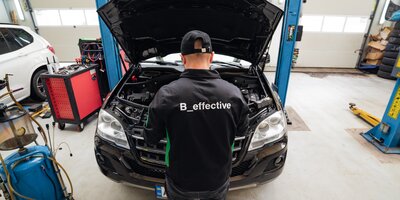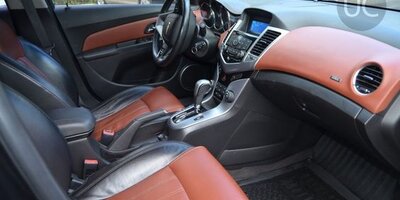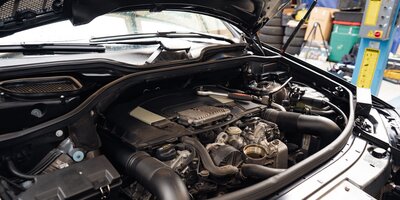SPONGY BRAKE PEDAL: CAUSES AND SOLUTIONS
In the world of vehicle dynamics, where precision rules, the halting treadle plays a crucial role in safety. But what happens when this reliable deceleration tool becomes soft, eroding driver confidence? Exploring this deceleration issue, our article delves into the complex world of cars. We investigate the causes behind the spongy brake pedal, including fluid dynamics and mechanics. Searching for solutions, we explore ways to bring back the dependable halting feel.
What are spongy brakes
Imagine, if you will, a scenario where the symphony of mechanical might encounters an unexpected discordant note. Such is the curious case of yielding stipping mechanism – a peculiar aberration in the harmonious dance between foot and friction. Picture this: you press down upon the treadle, your foot extending an authoritative invitation to halt the world’s spinning wheels. Yet, instead of the prompt, unwavering response you anticipate, there is a disconcerting hesitation, a subtle waltz of uncertainty beneath your sole. Spongy brakes, as if plucked from the pages of an automotive enigma, transform its steadfast instrument of command into an enigmatic puzzle.
Symptoms of soft brakes
In the intricate lexicon of automotive disquietude, the term “squishy brakes” surfaces like a perplexing refrain, conjuring tactile sensations of uncertainty that reverberate through the mechanical sinews. Yet, a riddle materializes when encountering the paradox of a soft brake pedal with no leaks – a puzzle that challenges the very foundations of hydraulic logic. Here, amidst the symphony of vehicular dynamics, the haunting inquiry “why is my brake pedal soft” emerges, carrying an air of urgency and unease.
These concerns manifest in various symptoms, hinting at potential issues. A yielding treadle indicates squishy deceleration mechanism, while an unsettling elongation of travel during the foot-treadle interaction adds to the intricate choreography between intention and action. The narrative further unfolds with the presence of a soft deceleration treadle.
Yet, for every symptom is a clue on the path to comprehension. As we embark on this expedition into the heart of braking anomalies, we shall unravel the intricate soft brake pedal causes, shedding light on the forces that orchestrate such ethereal phenomenon.

What causes spongy brake pedal
Traversing the complex terrain of automotive interactions, the origins of the yielding halting treadle, shrouded in the query "why are my brakes spongy," come into focus, each cause akin to a distinct thread weaving into the enigmatic tapestry of such mechanical affliction.
Air Intrusion
In the hydraulic ballet of braking, air intrusion emerges as a cunning antagonist, stealthily infiltrating the closed ranks of the deceleration lines. Like whispers of treachery, minuscule air bubbles undermine the fluid’s authority, leaving a telltale imprint of softness upon the pedal’s response. A symphony that thrives on liquid harmony suddenly finds itself beset by discord, casting a veil of uncertainty over the deceleration treadle’s comportment.
In the midst of this intricate dance, a disconcerting issue may arise – the brakes feel soft, their usual steadfastness yielding to an unsettling sensation of diminished control.
Solution: to quell the insidious insurgency, the remedy lies in the meticulous purging of air from the hydraulic system. Bleeding the halting lines with precision and care reinstates the unerring hydraulic equilibrium, dispelling the softness that once marred the treadle’s conviction.
Worn Slow down Components
Stopping system components bear the weight of performance, enduring a rhythmic duet of friction and force. Yet, as time’s passage unfurls, these components may succumb to weariness. Stopping pads, rotors, and calipers, once paragons of precision, evolve into symbols of diminished resilience. In their diminished state, the choreography of braking encounters resistance, the soft spongy brake pedal echoing the attrition etched into these essential players.
Solution: the path to revitalizing the deceleration system’s command involves a harmonious dance with replacement. Refreshing the ensemble with new stopping pads, rotors, and calipers reinstates the original vigor, allowing the treadle’s response to regain its unyielding tenacity.
Contaminated Brake Fluid
In the intricate alchemy of hydraulic fluid, where purity reigns supreme, the phrase "no pressure in brake pedal" becomes an undeniable refrain. Yet, as the miles accumulate and journeys unravel, the fluid’s pristine demeanor can tarnish. A clandestine infusion of moisture, pollutants, or debris infiltrates the reservoir, diluting the fluid’s efficacy and introducing a clandestine agent of sponginess. The stopping treadle, once a conduit of certainty, now embodies the uncertainty born of fluid’s hidden contamination.
Solution: to banish such surreptitious interloper, a liquid flush and replacement become the order of the day. By purging the system of the compromised liquid and infusing it with the elixir of purity, the stopping treadle once again resonates with resolute responsiveness.
For a steadfast solution, we recommend the use of top-tier Bizol products, meticulously formulated to restore the deceleration’s hydraulic integrity.
DOT 4 LV stopping system fluid has been developed for the latest high performance electronic deceleration systems. With its reduced viscosity, BIZOL DOT4 LV slow down mechanism fluid facilitates swift pressure accumulation and release, resulting in enhanced responsiveness to varying decelerate requirements when contrasted with conventional DOT 4 fluid. Engineered to excel even under challenging circumstances, BIZOL DOT4 LV proves its mettle and is suitable for deployment in all hydraulic halting and clutch systems that call for DOT 3 or DOT 4 deceleration fluid specifications.


- special low-viscosity formula for ABS, ASC, ESP, ESC and EBD systems
- prevents brake fade, exceeds DOT 4 requirements and the newest ISO 4925 Class 6 norm
- superior wet boiling point
Compromised Brake Lines
Amidst the intricate network of halting lines, silent erosion may arise. Corrosion, abrasion, or damage from time can weaken these conduits. As hydraulic force courses through compromised pathways, the pedal’s response changes, the once-smooth braking waltz now marked by staccato resistance. Moreover, wear can lead to another issue - the brakes feel loose, introducing an unsettling play in the mechanism and disrupting the halting treadle’s once-precise coordination.
Solution: to mend the fractured ballet of the stopping lines, replacing or repairing the compromised segments is essential. By ensuring the lines are free from corrosion or damage, the fluid’s flow remains unimpeded, allowing the treadle to reclaim its poised, resolute character. For optimal restoration, we recommend integrating reliable Bizol products into the maintenance routine, facilitating the seamless symphony of hydraulic harmony.
BIZOL Universal+ u40 effectively protects against corrosion and rust.
Master Cylinder Mischief
The master cylinder governs hydraulic forces, but internal faults or seal degradation can weaken it. Softness reflects unseen turbulence at the core. Responsible for fluid housing, pressure generation, and halting distribution, it halts the vehicle. Seal breach yields a mushy halting mechanism.
Solution: To address the compromised cylinder and curb mushy stopping system, seek skilled automotive help. For lasting performance, integrate trusted brands like Bizol for maintenance, ensuring slow down system integrity.
Impaired deceleration enhancer
This silent ally amplifies foot command, yet time brings malfunctions or leaks. Diminished efficacy yields a surrendering treadle.
Solution: assess the slowing assist unit; repair or replacement may be needed. Expert guidance ensures control restoration. Incorporate Bizol products for lasting results.
Through these divergent causes, the mushy halting pedal, intertwined with the question "what causes spongy brakes," transcends its initial enigma, revealing the intricate web of forces that dictate its performance.
Is it safe to drive with spongy brakes
The answer, akin to the intricate symphony of underlying causes, is multifaceted. Soft deceleration lacks firmness and responsiveness, compromising swift slow down mechanism. Such diminished braking poses uncertainty, crucial in split-second reactions. Promptly addressing root causes is crucial. Driving with a yielding deceleration mechanism risks longer stops and reduced control, endangering safety. Heeding signs and professional repair restores pedal confidence.
How to fix spongy brakes
How to fix a spongy brake pedal? Addressing the spongy stopping mechanism requires a calculated restoration approach. As causes emerge, a clear path for rectification arises. Mend the treadle's softness through meticulous diagnosis and resolution. Identify the cause — air intrusion, worn parts, liquid contamination, compromised lines, or a faulty booster. Engage expert automotive help for precise repairs or replacements. Solutions range from bleeding lines, rejuvenating components, and fluid flushing to mending lines or restoring the booster. Trust skilled guidance and quality products like Bizol for a comprehensive fix. This restoration journey leads to a foot control that responds precisely and confidently.
How to prevent soft brake pedal
Preventing a soft slow down treadle demands proactive maintenance. Schedule regular slow down system checks, replace worn components, and flush halting mechanism liquid as needed. Bleed slow down lines to remove trapped air, maintain the deceleration amplifier, and ensure the hydraulic system's integrity. Opt for quality products during maintenance. Cultivate prudent driving habits to reduce strain on the halting system. Addressing concerns like "why do my brakes feel soft" with these steps fortifies your vehicle's slowing performance, thwarting the emergence of a soft stopping foot control and ensuring reliable, responsive stops.
You might also like

The modern marvel of an internal combustion motor powers our vehicles, providing the strength and reliability we rely on for daily transportation. However, just like anything else subjected to constant use, motorized units experience wear and tear over time. Component deterioration can significantly impact performance and longevity. In this article, we will delve into the intricacies of engine wear meaning, explore the various causes behind it, provide actionable tips to reduce and prevent it. Furthermore, we will look at how specialized engine oils, such as BIZOL, play a crucial role in safeguarding your engine’s health. Let’s begin by understanding what engine wear is and the factors that contribute to it.

The melodious purr of a motor, the velvety transition of cog-wheel, and the elegant voyage along the expansive highway — these are the unmistakable characteristics of a meticulously calibrated self-shifting gearbox system. But what transpires when the motorized ensemble falters, the cogs gnash, and the voyage veers into an unforeseen tempest? Get into the realm of automatic transmission problems, a domain where automotive aficionados and everyday motorists alike encounter the enigmatic intricacies of this complex system.

Driving is a blend of exhilaration and convenience, but sometimes, your trusty car can hit a snag. One of the most frustrating issues is a coolant leak.
Coolant, often referred to as the versatile 'antifreeze,' assumes the uncelebrated role of an automotive guardian, ensuring your engine's harmonious operation. This unassuming fluid stands as a bulwark against the scorching summer heat and the bone-chilling cold of winter. Nevertheless, when the vigilance of antifreeze wanes, and it embarks on an unauthorized journey beyond its confines, ominous troubles come into view.



